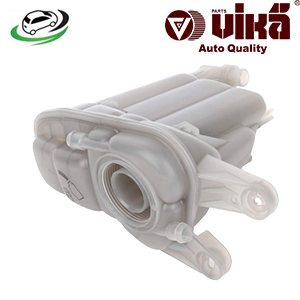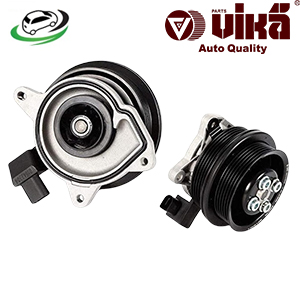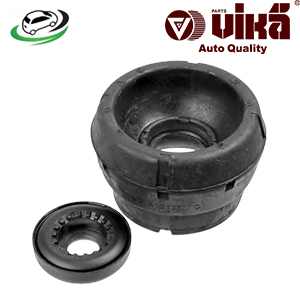-12%
Get Front Top Strut Mount – without Bearing Audi TT MKI / VW 337/20AE/Golf IV/Jetta IV/R32 MKIV/New Beetle 1J0412331CS
The top strut mount is a vital component of a vehicle’s suspension system, serving as a key link between the vehicle’s strut assembly and the body of the vehicle. Its design and functionality play a significant role in the overall performance, comfort, and safety of the vehicle. Here’s an in-depth look at the top strut mount, including its purpose, construction, benefits, common issues, and maintenance.
Construction and Function of the Top Strut Mount
Construction:
The top strut mount is typically made from durable materials such as steel, rubber, and polyurethane. The mount consists of several key components:
- Rubber or Polyurethane Bushing: Provides cushioning and noise isolation between the strut and the vehicle body.
- Mounting Plate: A metal plate that attaches to the strut assembly and is bolted to the vehicle’s chassis.
- Bearing: Many top strut mounts include a bearing that allows the strut to rotate smoothly as the vehicle turns.
Function:
- Attachment Point:
- Connection: The top strut mount serves as the connection point between the vehicle’s suspension strut and the body of the vehicle. It bolts to the top of the strut assembly and attaches to the vehicle’s chassis.
- Cushioning and Noise Isolation:
- Vibration Absorption: The rubber or polyurethane bushing within the top strut mount helps absorb vibrations and road shocks, reducing noise and providing a smoother ride.
- Noise Dampening: By isolating the strut assembly from the vehicle body, the mount minimizes noise and harshness transmitted to the cabin.
- Allowing Strut Movement:
- Rotation: The bearing in the top strut mount allows the strut to rotate smoothly as the vehicle turns, enabling proper steering and handling.
- Suspension Articulation: Facilitates the movement of the suspension system as the vehicle navigates different road conditions and maneuvers.
- Support for Suspension Components:
- Stability: The top strut mount supports the strut assembly, ensuring that the suspension system remains properly aligned and stable.
- Handling Performance: By maintaining the correct position of the strut, the top strut mount contributes to optimal handling and ride quality.
Benefits of the Top Strut Mount
- Enhanced Ride Comfort:
- Smooth Ride: The cushioning effect of the top strut mount reduces road noise and vibrations, leading to a more comfortable driving experience.
- Improved Isolation: Minimizes the impact of road imperfections on the vehicle’s cabin, contributing to a quieter and more pleasant ride.
- Improved Handling and Steering:
- Accurate Steering Response: The bearing in the top strut mount allows for smooth rotation of the strut, resulting in precise steering response and better handling.
- Stability: Helps maintain proper alignment of the suspension components, which enhances vehicle stability and control.
- Reduced Noise and Vibration:
- Noise Reduction: By isolating the strut from the vehicle body, the top strut mount reduces noise generated by the suspension system and road contact.
- Vibration Dampening: Absorbs and dampens vibrations transmitted through the suspension, improving overall ride quality.
- Support for Suspension Integrity:
- Proper Alignment: Ensures that the strut assembly is properly aligned, which helps maintain the integrity of the suspension system.
- Prevents Component Wear: By supporting the strut assembly effectively, the top strut mount helps prevent premature wear of suspension components.
- Enhanced Vehicle Safety:
- Stable Handling: Properly functioning top strut mounts contribute to stable handling and control, which enhances overall vehicle safety.
- Reduced Risk of Suspension Failure: By maintaining the correct position of the strut, the mount helps prevent suspension system failures that could compromise safety.
Common Issues with Top Strut Mounts
- Wear and Tear:
- Rubber Degradation: Over time, the rubber or polyurethane bushing in the top strut mount can degrade, leading to reduced cushioning and increased noise.
- Bearing Wear: The bearing in the top strut mount can wear out, causing rough steering or unusual noises during turns.
- Clunking or Rattling Noises:
- Noise Issues: Worn or damaged top strut mounts can produce clunking, rattling, or banging noises, especially when driving over bumps or during turns.
- Vibration Issues:
- Increased Vibration: A failing top strut mount may fail to absorb vibrations effectively, leading to increased road noise and vibrations in the cabin.
- Poor Handling and Steering Response:
- Handling Problems: Worn or damaged mounts can affect the vehicle’s handling and steering response, leading to a less precise driving experience.
- Suspension Misalignment:
- Alignment Issues: Faulty top strut mounts can lead to misalignment of the suspension components, affecting vehicle stability and tire wear.
Signs of a Failing Top Strut Mount
- Unusual Noises:
- Clunking Sounds: Hearing clunking, banging, or rattling noises from the front suspension area, especially when driving over uneven surfaces, can indicate a failing top strut mount.
- Squeaking Sounds: Squeaking or squealing noises during turns may also signal issues with the top strut mount or its bearing.
- Increased Vibration:
- Rough Ride: If you experience increased vibration or a rough ride, it may be due to worn or damaged top strut mounts failing to absorb road impacts effectively.
- Handling Issues:
- Poor Steering Response: Difficulty in steering or a lack of responsiveness during turns may indicate problems with the top strut mount or its bearing.
- Suspension Noise:
- Suspension Movement: If you notice excessive movement or noise from the suspension system when the vehicle is stationary or in motion, it may be related to a faulty top strut mount.
- Visible Damage:
- Inspect the Mounts: Inspect the top strut mounts for visible signs of wear, cracks, or damage. Any visible deterioration can indicate a need for replacement.
Maintenance and Replacement
- Regular Inspections:
- Visual Check: Periodically inspect the top strut mounts for signs of wear, damage, or leakage. Check for any unusual noises or handling issues during driving.
- Listen for Noises:
- Noise Monitoring: Pay attention to any unusual noises coming from the suspension area, and address them promptly to prevent further damage.
- Professional Inspection:
- Mechanic Assessment: If you suspect issues with the top strut mounts, have a professional mechanic perform a thorough inspection to diagnose and address any problems.
- Timely Replacement:
- Replace Worn Mounts: If the top strut mounts are found to be worn or damaged, replace them with high-quality, OEM or aftermarket parts to ensure proper function and performance.
- Alignment Checks:
- Suspension Alignment: After replacing top strut mounts, have the vehicle’s suspension alignment checked and adjusted as needed to ensure optimal handling and tire wear.
Follow us on Facebook for more parts.



